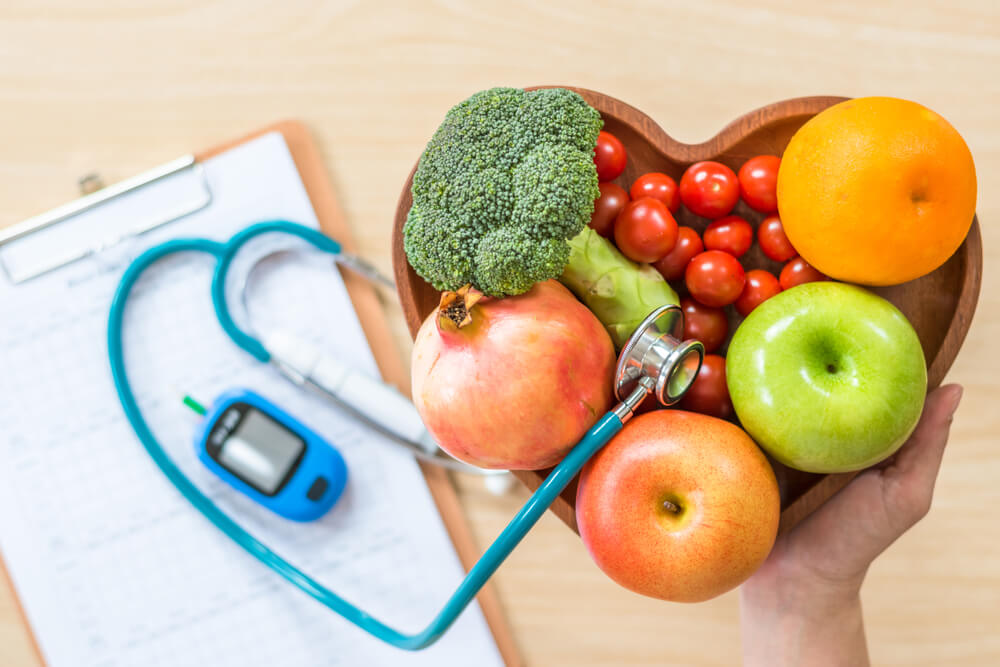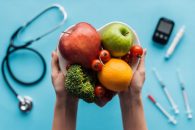Manage your health better with a type 2 diabetes diet plan
Living with diabetes takes constant monitoring and tweaking depending on where your blood glucose level is. One of the recommendations of the American Diabetes Association’s standards of care is for diabetics to play a role in managing their own illness. Our diabetes diet guidelines can help you create a diabetes diet plan that is right for you.
Click here to explore meal plans for Type 2 Diabetes
Diabetes Diet Guidelines
If you are diabetic or prediabetic and are overweight, it is highly recommended that you lose some weight. You can ask your doctor to assist you in a diet plan to lose weight. Some recent diet trends that work well are the ketogenic diet, Atkins diet, and the low-carb paleo diet.
To lose weight, the focus here is on counting carbs and limiting carb intake to less than 20 grams per day. Protein and fat are increased in these types of diets, and usually, there is no sugar allowed (or perhaps a small amount). If you are having difficulty losing weight, these diets may be an acceptable way to lose those added pounds on a short-term basis. Ask your doctor if he recommends one of these diets for you.
Type 2 Diabetes Diet
With type 2 diabetes, the body has a difficult time sending blood sugar to the cells where it is needed. The result is that much of the sugar remains in the bloodstream where elevated sugar levels can cause all types of adverse effects including cardiovascular disease, and kidney, nerve and eye damage. Following a type 2 diabetes diet is an important step in controlling high blood sugar levels:
- Foods that should be avoided include white bread, flour, pasta, cakes, cookies, pastries, regular and diet soda, sugary juices, high animal fats, trans fats, processed carbohydrates, refined sugars, high fructose corn syrup, high-fat dairy, and artificial sweeteners.
- A type 2 diabetes diet should include fruits, vegetables, whole wheat, brown rice, beans, lentils, and quinoa.
- Foods that are in the low-glycemic index are a good choice for type 2 diabetics because they raise blood sugar levels moderately. Glycemic control will assist you in preventing any adverse type 2 diabetes complications.
- Proteins are a steady source of energy and barely affect blood sugar levels. Protein will make you feel full after a meal, assist in keeping blood sugar levels low, and control the craving for sweets. Excellent protein choices to include in your diabetes diet plan include eggs, dairy, seafood, legumes, beans, peas, tofu, and lean meats and poultry.
- While good fats do not have a great effect on blood sugar levels, they can assist in slowing carbohydrate absorption. Good fats include olive, sesame, vegetable, sunflower and soybean oils, plus fatty fish like tuna, mackerel, herring, and salmon.
- Super-foods to add to your diabetes diet plan include lentils, chia seeds, cinnamon, white balsamic vinegar, and lentils.
- A healthy type 2 diabetes diet should consist of plenty of vegetables, and a small amount of processed sugars and red meat. Good diabetes diet plan categories include the American Diabetes Association Diet, the Paleo Diet, and the Mediterranean Diet.
With the help of your doctor, you should be able to manage your diabetes successfully. Be sure to follow our diabetes diet guidelines, get enough rest and exercise, monitor your blood sugar frequently, and take your medications as prescribed.
Learn more about type 2 diabetes diet recommendations at www.BetterHealthKare.com


